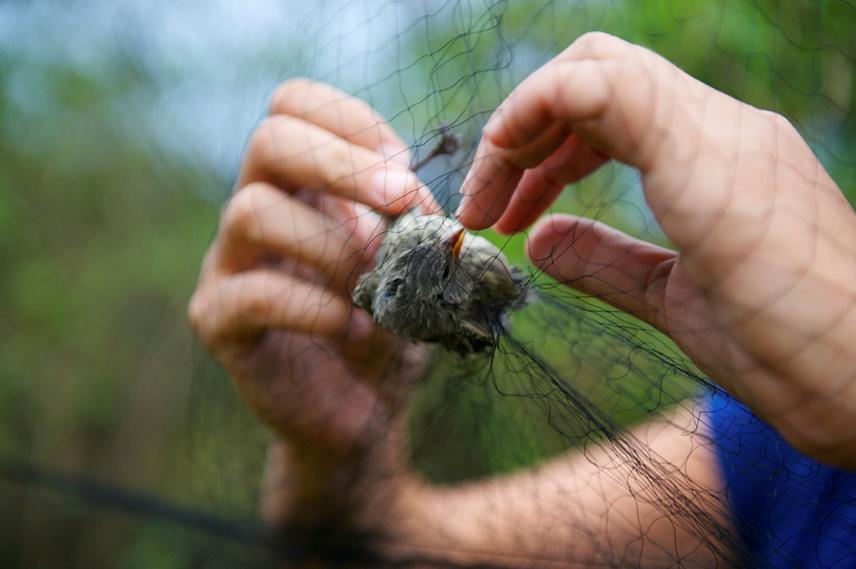Katharina Johanne Peters & Sonia Kleindorfer
Other projects
The key outcome of this research is ensuring the continued survival of the iconic Darwin’s finches by elucidating the host-parasite-habitat interaction effects in the Darwin Tree Finch Group.
The iconic Darwin’s Finches are the cornerstone of evolution and hence ecology and conservation. Habitat degradation is the greatest threat to Galápagos land birds, and is caused by human settlement, agriculture clearance, introduced plants, predators, and parasites. Galápagos National Parks recently ranked the introduced parasitic fly Philornis downsi as the highest risk for all Galápagos land birds. The adult fly is a harmless vegetarian, but lays its eggs in bird nests and the hatched larvae feed on nestling blood and tissue.

Finch captured in mistnet. ©Bodo Peters.
The fly was discovered in bird nests in 1997, and since 1998, annual nestling mortality of up to 98% due to the fly has been recorded across islands and bird species. The parasite is commonest in the shrinking moist forest highlands of inhabited islands, which are dominated by the endangered tree Scalesia pedunculata. This tree is the preferred nesting tree of Darwin’s Tree Finches (Camarhynchus spp.), which have severely declined becoming locally extinct on some islands, probably because of the high mortality caused by the parasite in small host populations in restricted habitat.
Our preliminary research has shown that a high density of hosts in nesting associations leads to more parasitism, particularly in finches that make larger nests. Human activities are reducing available Scalesia habitat, which forces finches to nest at higher densities, which probably exacerbates parasitism. Galápagos National Parks plans to re-vegetate and protect the remaining endemic Scalesia forest. Our project will complement this large-scale habitat approach by quantifying the costs of habitat degradation for endemic birds. We will investigate reproductive success in relation to nesting associations, parasite intensity and habitat quality.
Furthermore, our research provides the means to facilitate the survival of the remaining finches while the Scalesia forest is re-established.